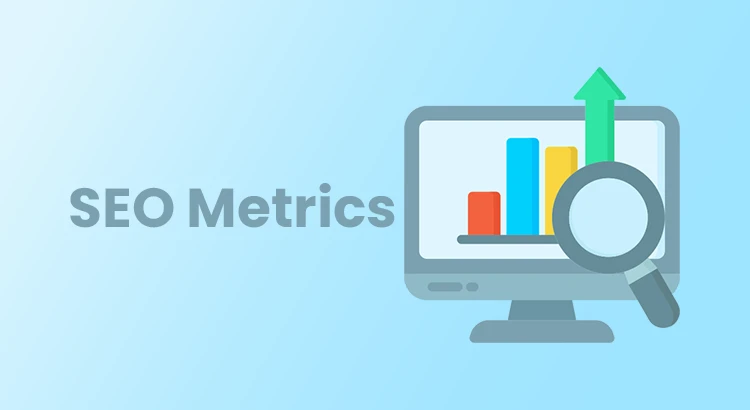SEO metrics are vital indicators that help businesses assess the effectiveness of their online visibility efforts. Reputed SEO agencies rely on these insights to fine-tune content, structure, and technical aspects of a site. Understanding what to track can provide a clearer picture of progress and highlight areas needing attention. This article walks you through the key measurements that truly matter.
Top 10 SEO Metrics Worth Tracking
Tracking the right performance indicators is essential for evaluating your site’s visibility and effectiveness in SERPs. Below are the top ten focus areas that can help shape your optimization efforts.
1. Organic Traffic
This measures the number of users who arrive at your website through unpaid search results. When this number grows steadily, it suggests your content is aligning well with what people are searching for. However, it’s not just about attracting more visitors, but also about drawing the right ones. Reviewing this data in platforms like Google Search Console (GSC) can reveal the impact of your efforts on long-term visibility.
2. Keyword Rankings
This reflects where your pages appear in SERPs for specific keywords. High placements for important search terms often mean your content is being recognized as valuable. Over time, tracking shifts in these positions helps you understand which topics are working and where there is room to improve. Tools that monitor ranking performance give consistent insights to guide your content planning.
3. Search Visibility
This reflects the share of total clicks your website receives from a selected group of keywords. It offers a broader perspective than individual rankings by showing how visible your site is overall in SERPs. It also makes it easier to compare your performance against competitors and evaluate the strength of your website copy across multiple search queries.
4. Traffic Value
This indicates how much it would cost to get the same amount of traffic through paid search ads. A higher value often means your website is ranking for search terms that lead to purchases or signups. This measure highlights the commercial potential of your material and can help you prioritize pages or topics that bring in more valuable visitors.
5. Organic Traffic Conversions
This metric shows how many visitors from organic results complete key actions like making a purchase, signing up, or submitting a form. It connects your visibility efforts to actual business goals. Tracking these outcomes helps you focus on what drives real engagement rather than just traffic volume. It’s also a useful way to measure the effectiveness of your website copy and calls to action.
6. Referring Domains
This counts how many different websites link to yours. These backlinks often signal trust and relevance to Google, which can lead to improved ranking positions. As you gain links from more sources, especially from reputable sites, your authority increases. Watching this number grow is a good way to evaluate the success of your outreach and content promotion efforts.
7. Indexed Pages
This shows how many of your pages are recognized and included in a search engine’s index. If your content isn’t indexed, it won’t show up in SERPs. An increase in indexed pages generally means your site is being crawled and updated properly. On the other hand, sudden drops might suggest technical issues or pages being excluded unintentionally.
8. Index Coverage Errors
These are problems that stop certain pages from being included in SERPs, even though they are supposed to be. They might be caused by misconfigured settings, server problems, or missing information. Identifying and resolving these issues ensures your content is accessible and improves the overall health of your site.
9. Core Web Vitals
This set of measurements focuses on user experience, particularly site loading speed, responsiveness, and layout stability during load time. Boosting these elements enhances visitor interaction and signals Google that your site is user-friendly. Tools like GSC give you specific data on each of these areas to help guide performance improvements.
10. Bounce Rate
This reflects the percentage of people who leave your site without exploring further. A consistently high bounce rate may suggest that visitors aren’t finding what they need or that your content doesn’t match their intent. While it’s not always negative, especially for pages designed to answer a quick question, tracking patterns over time can help you identify areas where engagement could be improved.
In a Nutshell
Monitoring the right SEO metrics is key to evaluating site performance in SERPs. While it’s tempting to focus on traffic alone, true success lies in how your content, structure, and technical setup contribute to broader business goals. By keeping an eye on the ten performance areas discussed here, you can make informed improvements and stay ahead in the world of website optimization.


